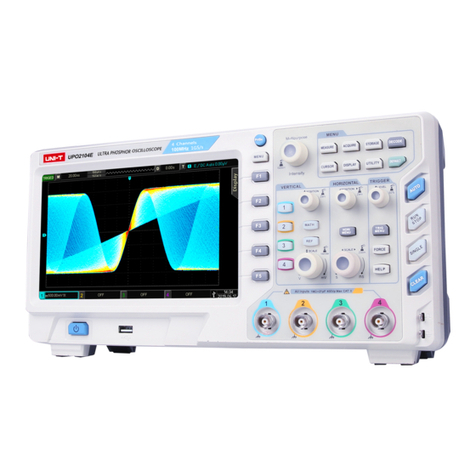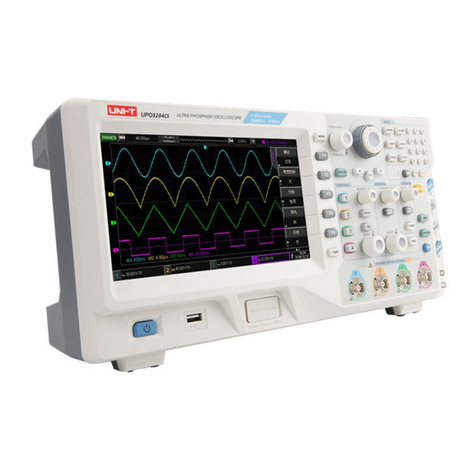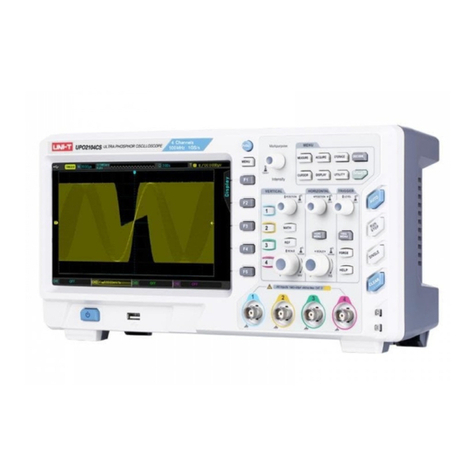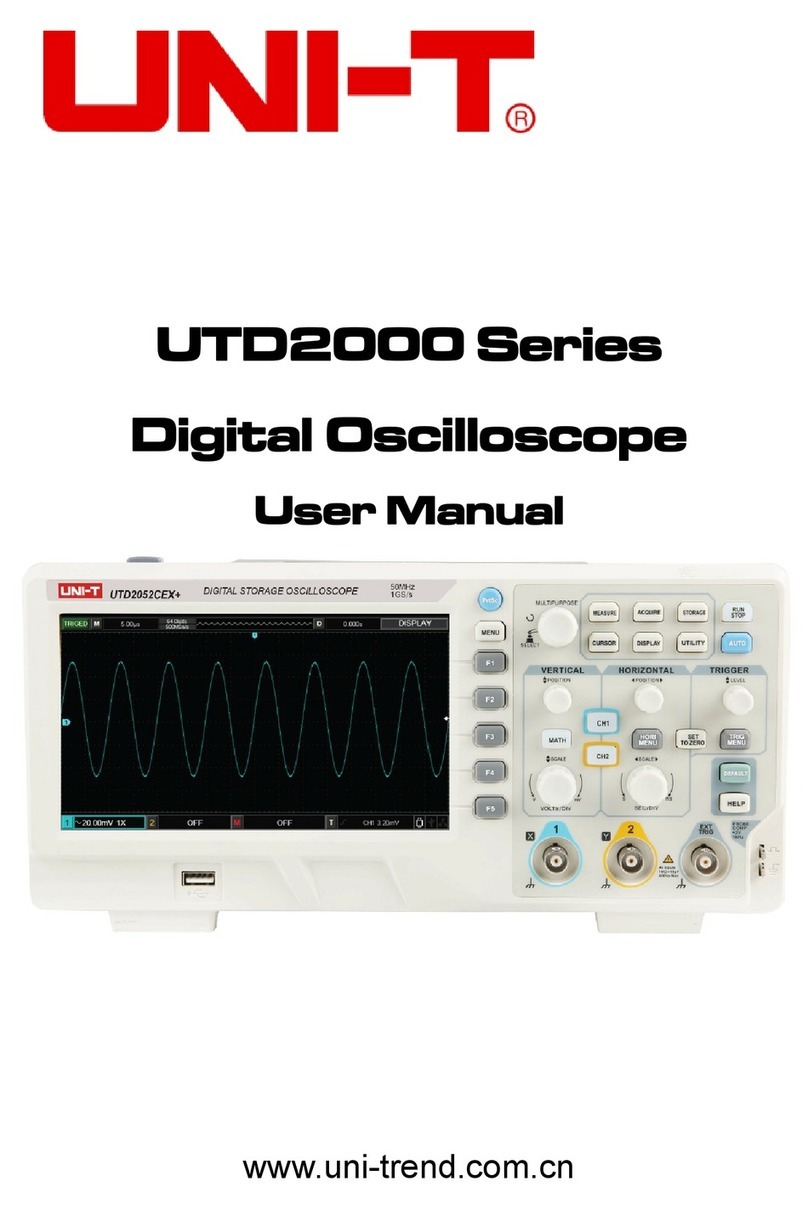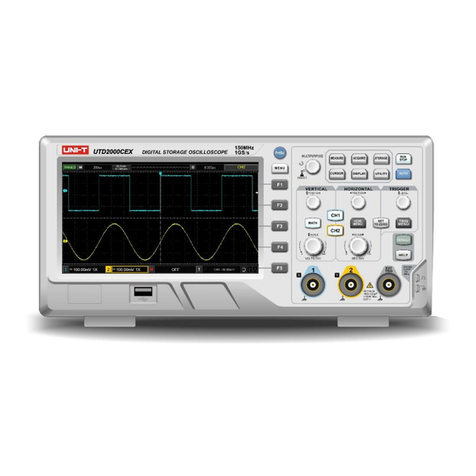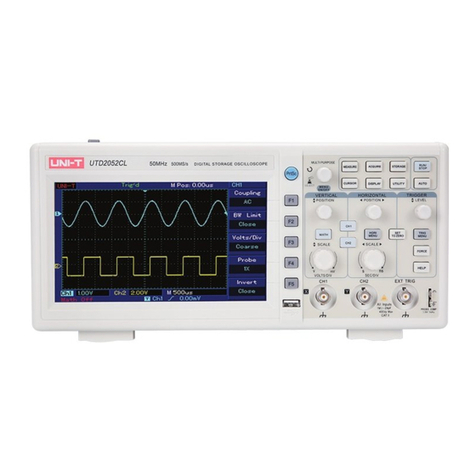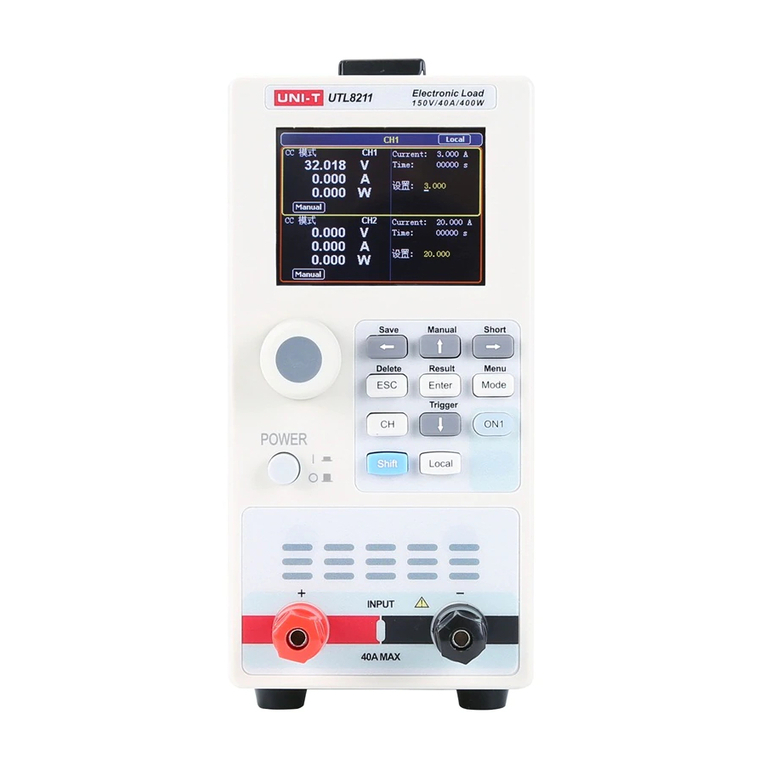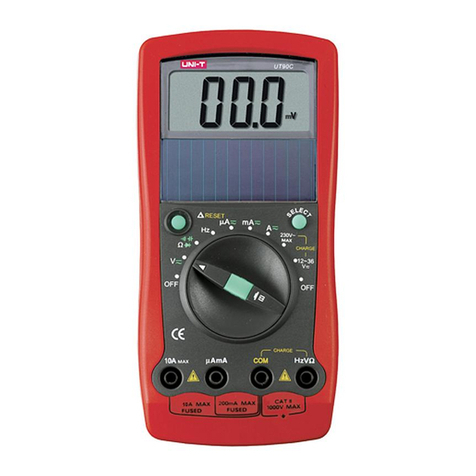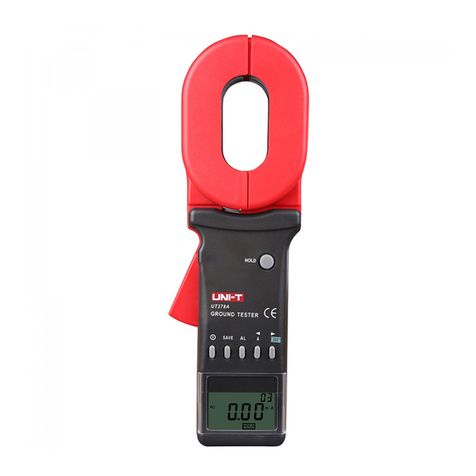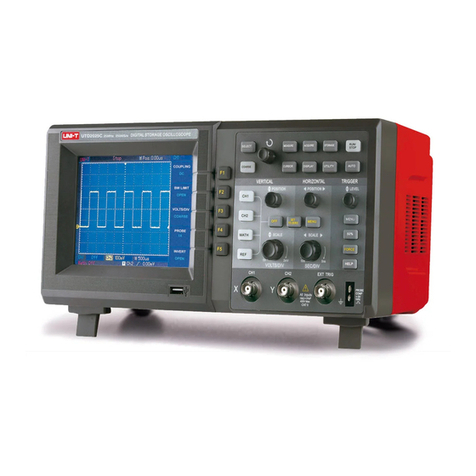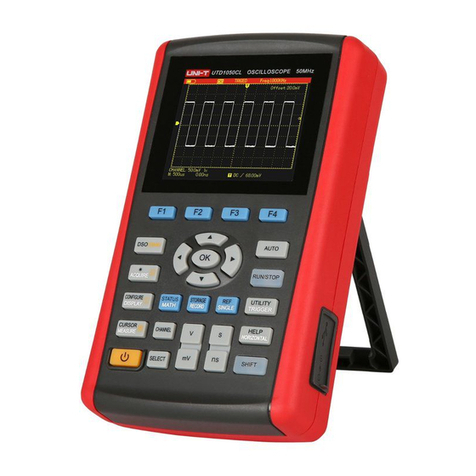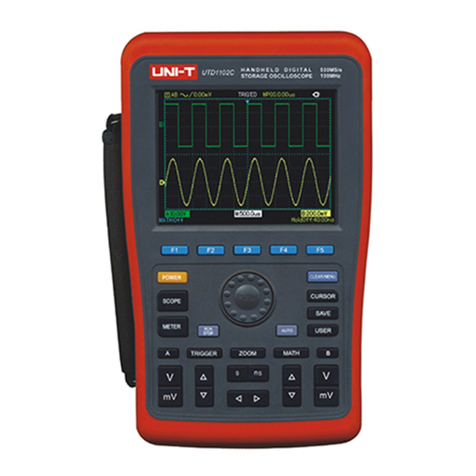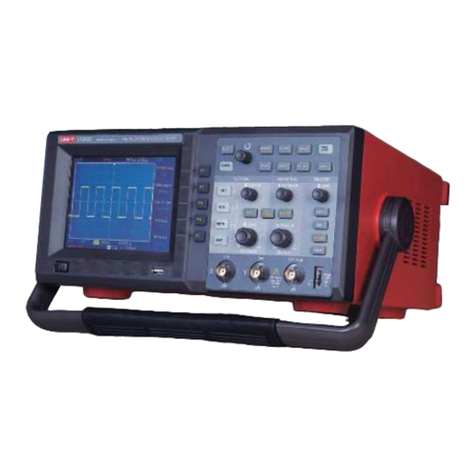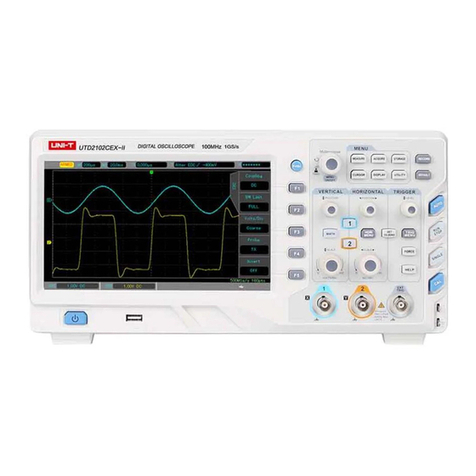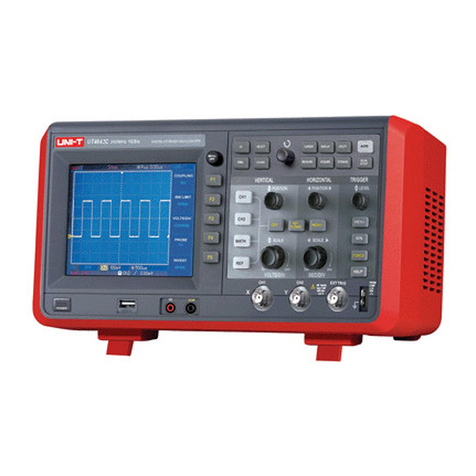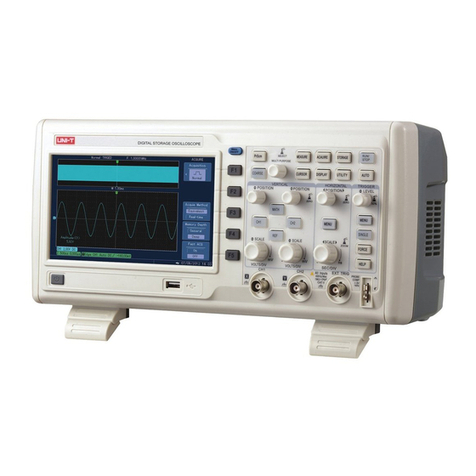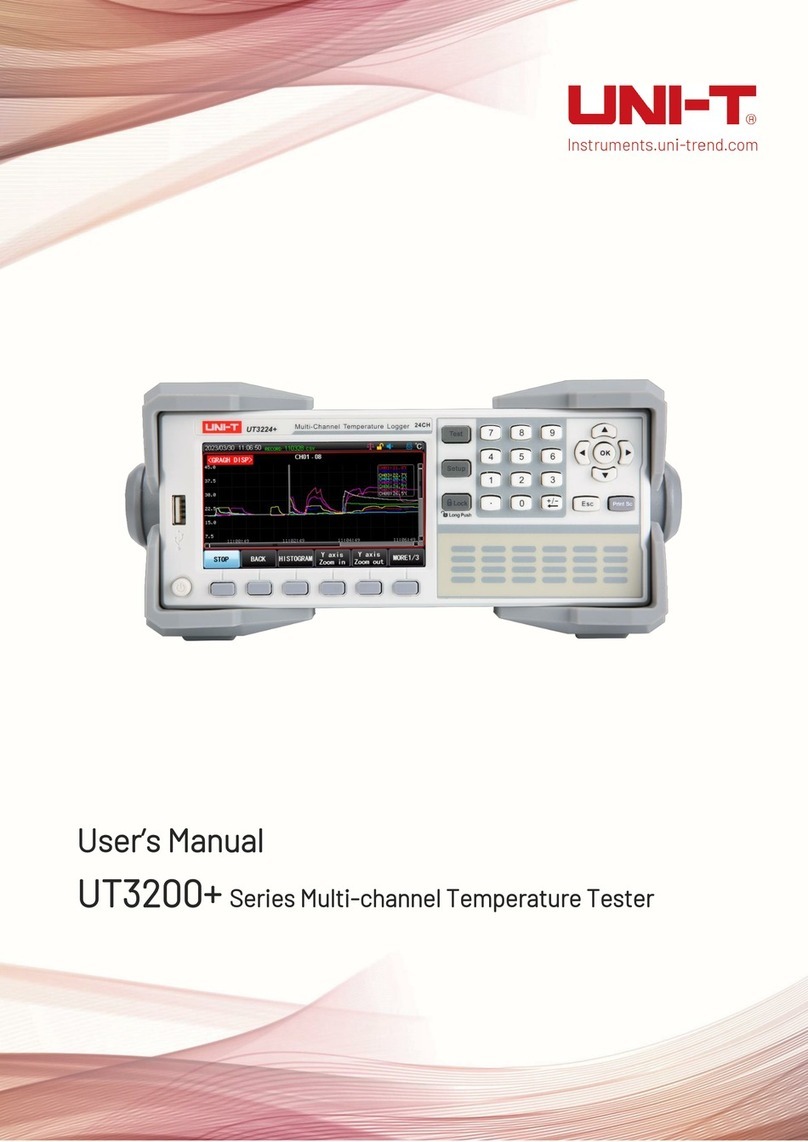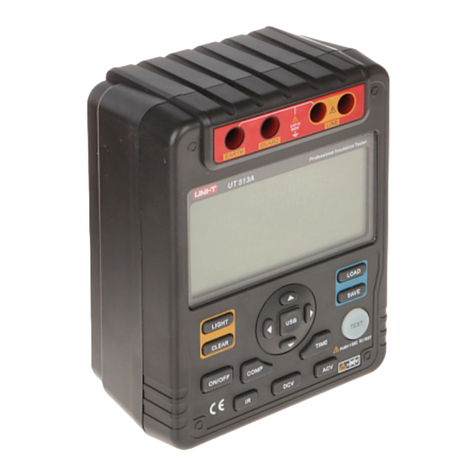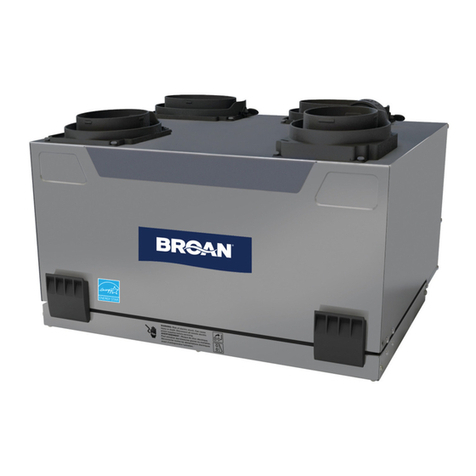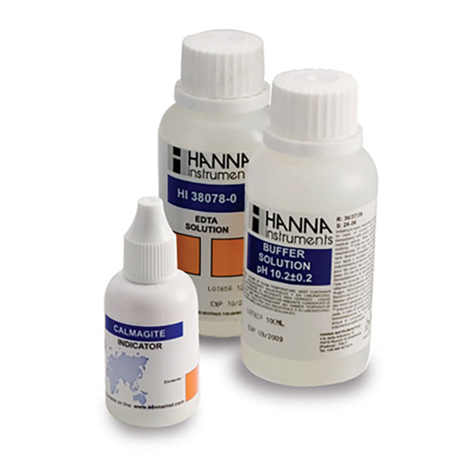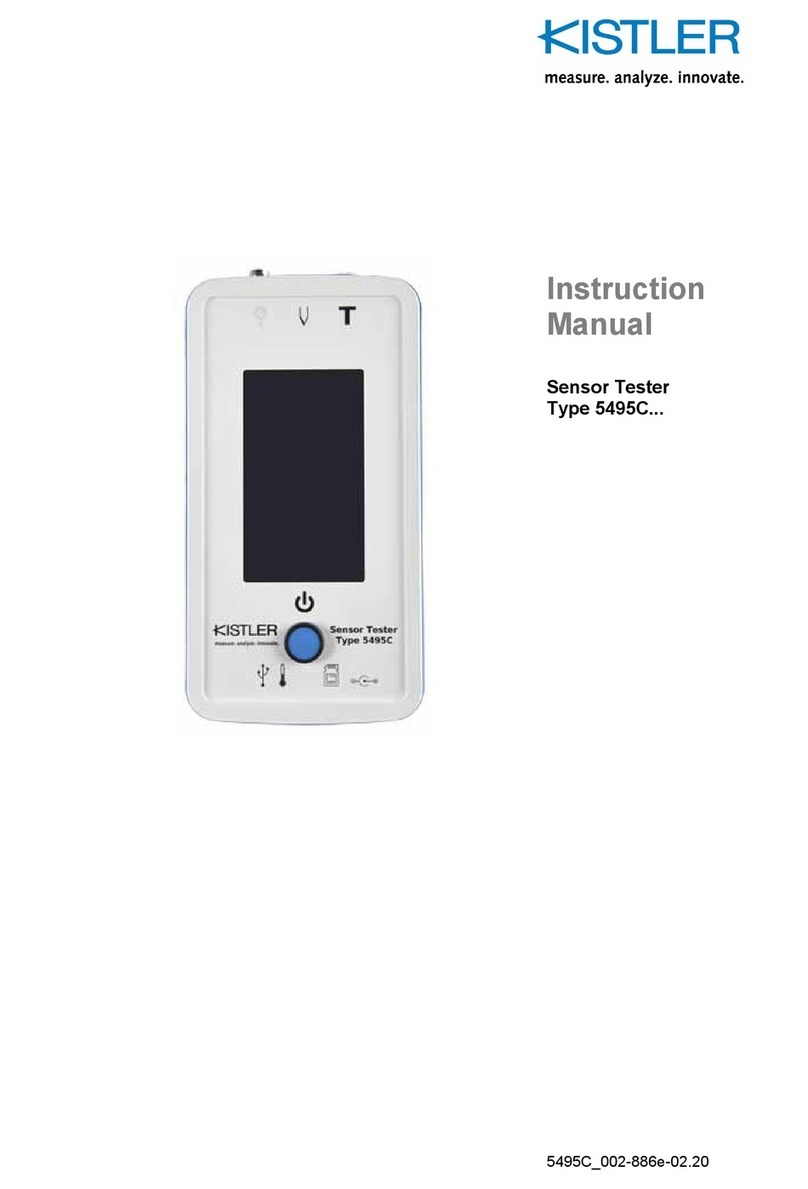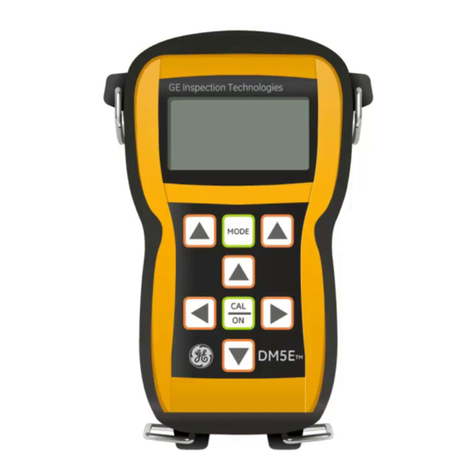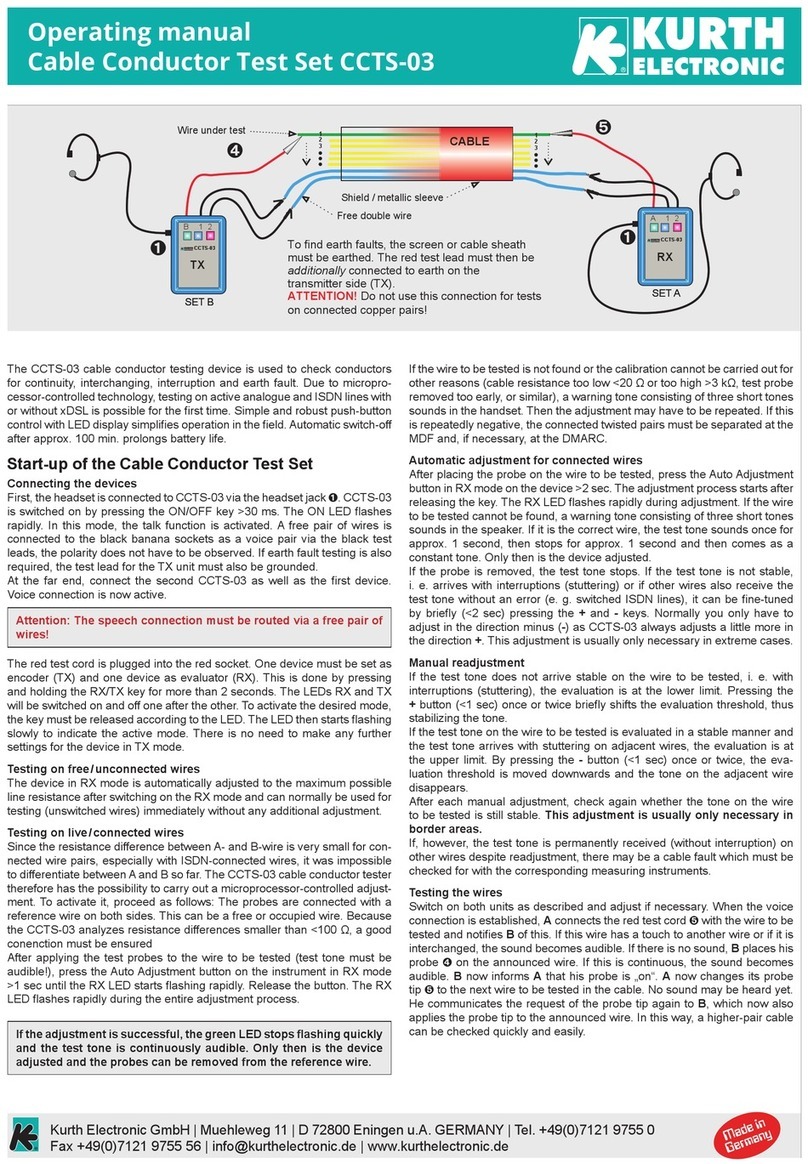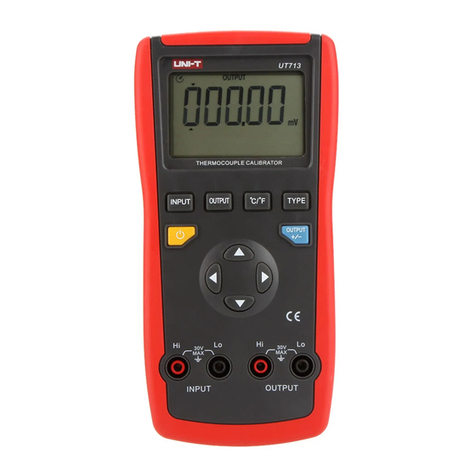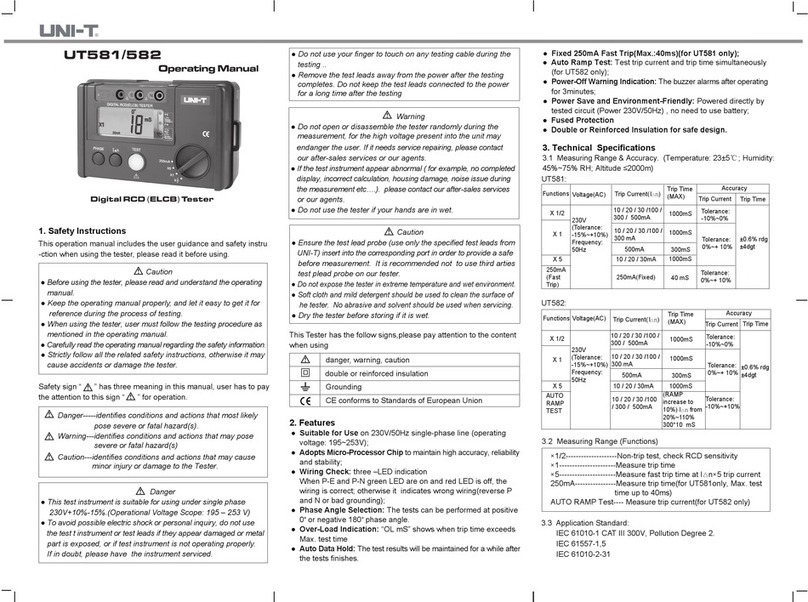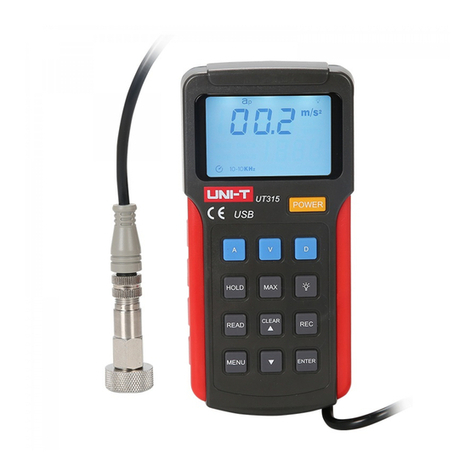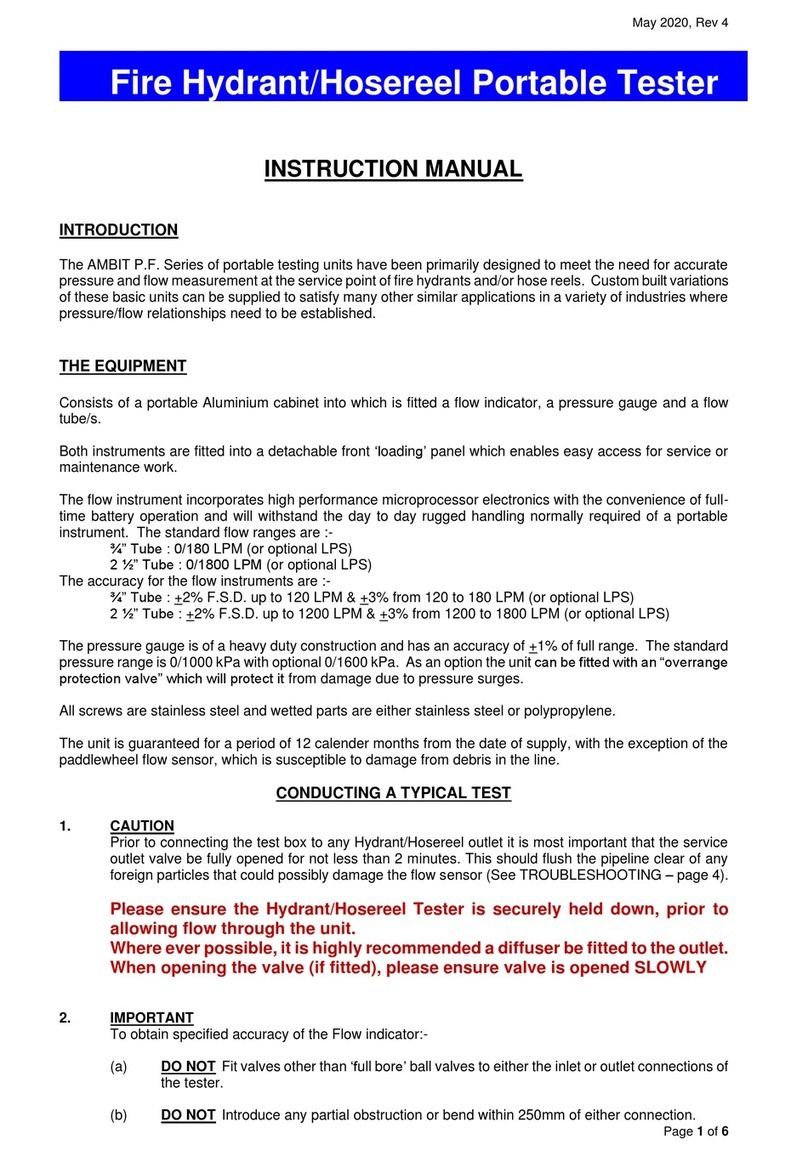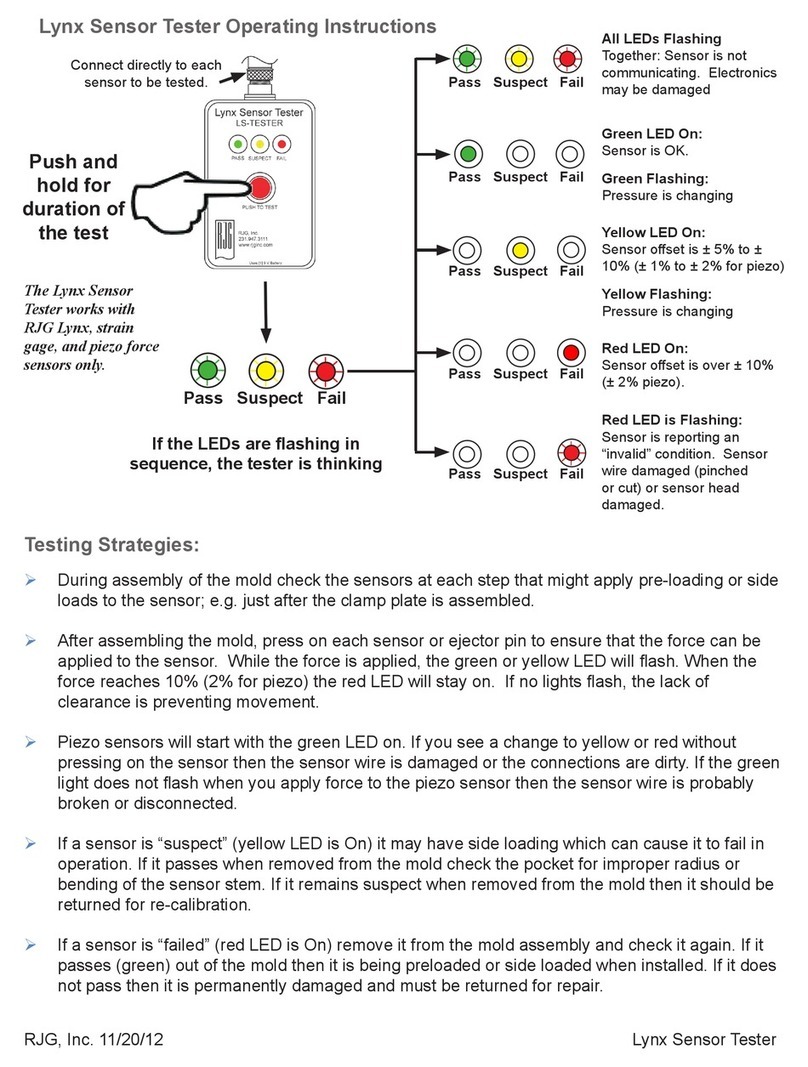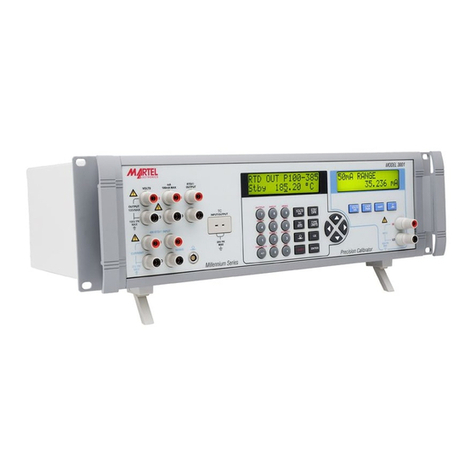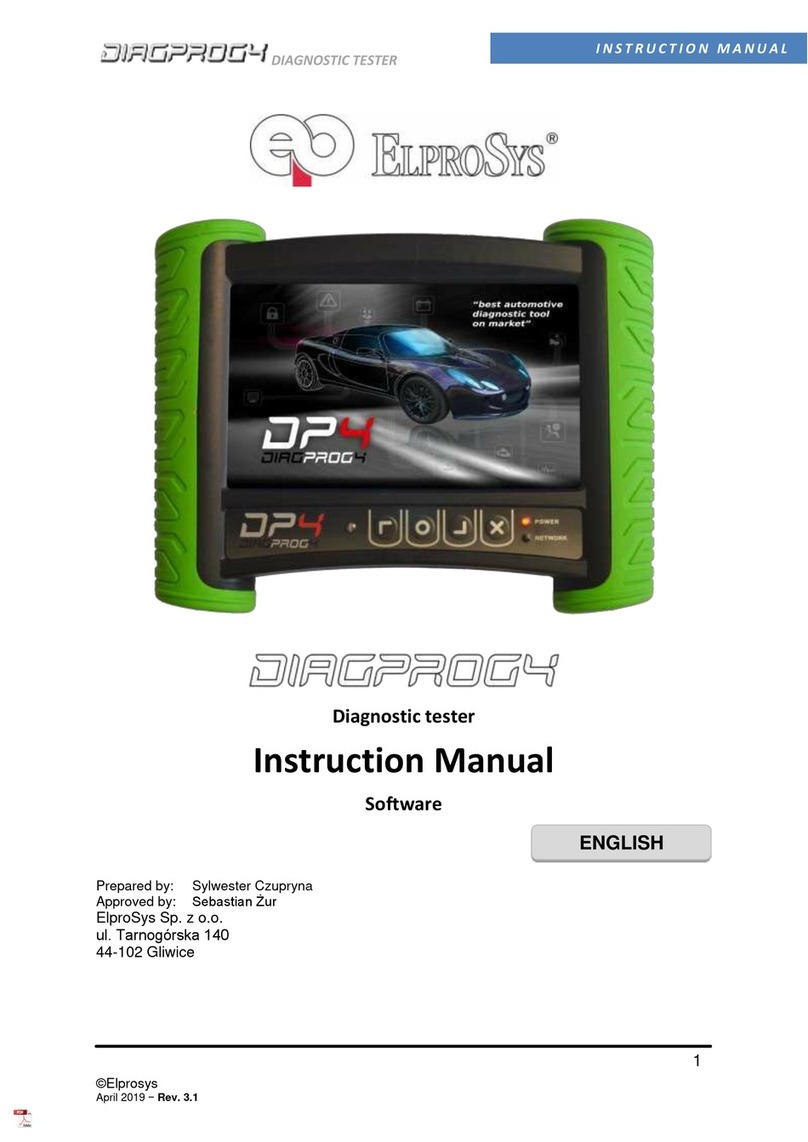
P/N:110401108963X
Preface
Thank you for purchasing the new LED tester. In order to use this product
safely and correctly, please read this manual thoroughly, especially the
Safety Warning part.
After reading this manual, it is recommended to keep the manual at an
easily accessible place, preferably close to the device, for future reference.
Limited Warranty and Liability
Uni-Trend guarantees that the product is free from any defect in material
and workmanship within one year from the purchase date. This warranty
does not apply to caused by accident, negligence, misuse, damage
modification, contamination or improper handling. The dealer shall not be
entitled to give any other warranty on behalf of Uni-Trend. If you need
warranty service within the warranty period, please contact your seller
directly.
Uni-Trend will not be responsible for any special, indirect, incidental or
subsequent damage or loss caused by using this device.
UT659A/UT659D LED Tester User Manual
I. Safety Warning
This manual contains warning information and safety regulations. Please
observe them strictly to ensure the safety of the user and tester.
Caution:
1. Please read and understand the contents of the manual before using
the tester.
2. Please be sure to understand the safety aspects of the manual in detail.
3. Uni-Trend is not responsible for any damage caused by improper use
or violation of the safety regulations in the manual.
4. This manual is subject to change without prior notice.
Safety symbol “ ” has three meanings in the manual. Users should
pay special attention to the operation with the symbol when reading.
Danger----- identifies conditions and actions that are likely to pose
serious or fatal hazards.
Warning---- identifies conditions and actions that may pose serious
or fatal hazards.
Caution----- identifies conditions and actions that may pose minor
injury or damage the tester.
This tester is a power output device. Please do not use it to test
live circuits.
This tester can output up to 30mA current/300V voltage. Please
do not touch both ends of the output test leads.
Danger
This tester is a power output device. Do not use it to test circuits
connected to vulnerable components, such as CPU on the board.
When the tester is testing at 30mA/300V, if the voltage rises but
there is no LED lit, please discontinue the test.
Warning
Do not look directly at the high-brightness LED light source for a
long time.
Do not light high-power LED lamps for a long time to avoid
overheating of the tester.
If the tester is not used for a long time, please unplug the power.
Caution
The meaning of the symbols associated with this tester:
Equipment protected throughout by DOUBLE INSULATION
or REINFORCED INSULATION
Danger, Warning or Caution
Caution, possibility of electric shock
Please read the instructions before use.
II. Features
The UT659A/UT659D LED tester supports full voltage (85V~265V, 50Hz
/60Hz) input, which can be used after powering it up for 1 minute to ensure
stable voltage output. When performing a LED test at 30mA/300V, the
LED polarity can be automatically identified (short-circuit the positive and
negative ends of the test leads continuously for about 5s to switch between
automatic identification of polarity and non-automatic identification of
polarity), and the output voltage is adaptively adjusted according to the
forward voltage drop of the tested LED. The internal chip of the tester has
over temperature, overcurrent and overload protection functions.
1. UT659A
1) When the toggle switch is placed in the 30mA/300V position, the LCD
displays the output voltage and output current.
2) When the toggle switch is placed in the position for circuit continuity
test, the LCD displays the resistance value or OL.
2. UT659D
1) When the toggle switch is placed in the 2mA/24V position for single
LED lamp bead test, automatic identification of LED polarity is not
performed.
2) The LCD only displays the output voltage.
III. Tester Appearance and Main Accessory
UT659A UT659D
1
2
3
4
5
6
Input socket
LCD
Toggle switch
Output ports
Input power cord
Test lead slots
IV. Specifications
1. Technical indicators
30mA/300V DC 320V
DC 5V
33mA
50mA
±2%±5 digit
NA
±2%±5 digit
NA
NA
±2%±5 digit
30mA/300V
2mA/24V
DC 320V
DC 24V
33mA
2mA
±2%±5 digit
±2%±5 digit
UT659D
UT659A
Input voltage
Input voltage
AC 85V~265V, 50Hz/60Hz
AC 85V~265V, 50Hz/60Hz
Function
Output
voltage
(MAX)
Output
current
(MAX)
Voltage
display
accuracy
Current
display
accuracy
Resistance
display
accuracy
Function Output voltage
(MAX)
Output current
(MAX)
Voltage display
accuracy
2. Measurement Range (Function)
1) 30mA/300V:
Tests the TV backlight, LED lamp and other series circuit of multiple
lamp beads with automatic identification of LED polarity (Note: LED
Short-circuit the positive and negative ends of the test leads continuously
for about 5s to switch between automatic identification of polarity and
non-automatic identification of polarity; in the automatic identification
of polarity mode, when the backward impedance for the series circuit
of multiple LED lamp beads is too large, which is similar to open circuit
for the output of DC 300V, manually change the polarity of the test
leads for testing).
Do not discard the tester or its accessories as unsorted
municipal waste. Please dispose properly in accordance
with local regulations.
